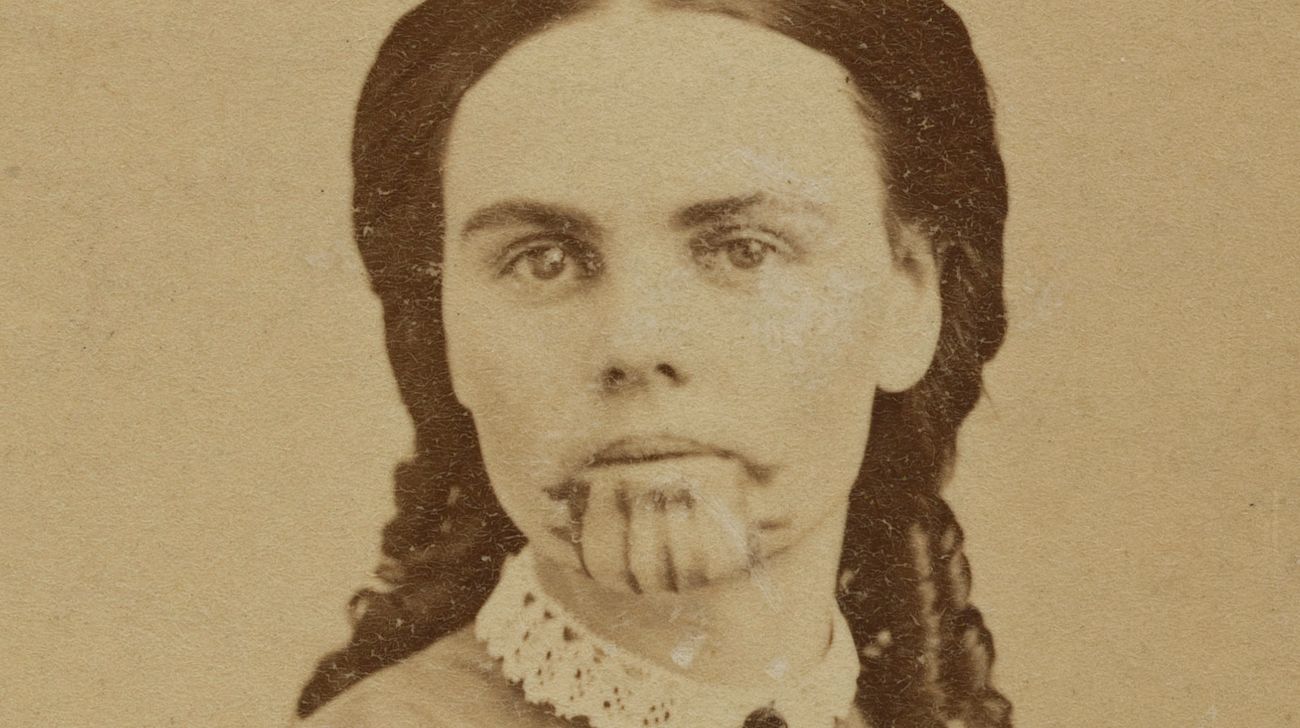
Who was Olive Oatman? Olive Oatman was a young pioneer girl whose life took a dramatic turn in the mid-1800s. Captured by Native Americans at the age of 14, she spent several years living with the Mohave tribe. Her story is one of survival, resilience, and cultural exchange. Marked by a distinctive blue tattoo on her chin, Olive became a symbol of the complex relationships between settlers and Native Americans. Her tale, filled with both tragedy and triumph, continues to captivate historians and readers alike. Ready to learn more about Olive Oatman's incredible journey? Dive into these 38 fascinating facts!
Key Takeaways:
- Olive Oatman's captivating life as a captive of the Mohave tribe and her return to white society showcases the complexities of cultural assimilation and the human capacity for resilience.
- Olive Oatman's story has left a lasting impact on American culture, inspiring books, movies, and TV shows, while challenging stereotypical narratives of Native American captivity.
Early Life of Olive Oatman
Olive Oatman, a name that echoes through history, had a life filled with extraordinary events. Her journey began in the mid-19th century, and her story continues to captivate many.
- Olive Oatman was born in Illinois in 1837.
- She was the fifth of seven children in her family.
- Her parents, Royce and Mary Ann Oatman, were devout Mormons.
- In 1850, the Oatman family joined a wagon train heading to California.
The Fateful Journey
The Oatman family's journey to California was fraught with peril. They faced numerous challenges, but none as significant as the one that would change Olive's life forever.
- In 1851, the Oatman family was attacked by a Native American tribe.
- Olive and her sister Mary Ann were taken captive during the attack.
- The rest of the Oatman family, except for their brother Lorenzo, were killed.
Life Among the Mohave
Olive and her sister were eventually traded to the Mohave tribe, where they would spend several years. This period of her life was marked by both hardship and adaptation.
- The Mohave tribe adopted Olive and Mary Ann as their own.
- Olive was given the name "Oach" by the Mohave.
- The sisters were tattooed on their chins, a Mohave custom.
- Mary Ann died of starvation during a famine in 1855.
Return to Civilization
Olive's return to the white world was a complex and emotional process. Her experiences with the Mohave had changed her, and reintegration was not easy.
- Olive was ransomed back to white society in 1856.
- She was reunited with her brother Lorenzo, who had survived the attack.
- Olive's story became widely known, and she was often asked to speak about her experiences.
- She wrote a book about her captivity titled "Life Among the Indians."
Later Life and Legacy
Olive Oatman's later years were marked by attempts to find normalcy and peace. Her legacy, however, continued to grow as her story was retold through various media.
- Olive married John Fairchild in 1865.
- The couple moved to Sherman, Texas, where they lived a quiet life.
- Olive never had children.
- She became involved in charitable work and supported various causes.
- Olive passed away in 1903 at the age of 65.
Cultural Impact
Olive Oatman's story has left a lasting impact on American culture. Her life has been the subject of books, movies, and even television shows.
- Olive's story was dramatized in the 1956 film "The White Squaw."
- Her life inspired the character of Eva in the TV series "Hell on Wheels."
- Numerous books have been written about her, including "The Blue Tattoo" by Margot Mifflin.
- Olive's chin tattoos have become a symbol of her resilience and strength.
Misconceptions and Myths
Over the years, many misconceptions and myths have surrounded Olive Oatman's story. It's important to separate fact from fiction to understand her true legacy.
- Some believe Olive was mistreated by the Mohave, but she often spoke of their kindness.
- The tattoos were not a mark of slavery but a sign of acceptance into the tribe.
- Olive did not suffer from Stockholm syndrome; she genuinely adapted to her new life.
- Her story was sometimes sensationalized in the media for dramatic effect.
Historical Significance
Olive Oatman's life offers valuable insights into the interactions between Native Americans and settlers. Her story is a testament to the complexities of cultural assimilation and survival.
- Olive's experience highlights the harsh realities of westward expansion.
- Her story provides a unique perspective on Native American customs and traditions.
- Olive's life challenges the stereotypical narratives of Native American captivity.
- Her resilience and adaptability are celebrated as key aspects of her character.
Personal Reflections
Olive Oatman's personal reflections on her life reveal a woman of great strength and complexity. Her writings and speeches offer a window into her thoughts and feelings.
- Olive often spoke of her gratitude for the Mohave's care during her captivity.
- She struggled with her identity after returning to white society.
- Olive's writings reflect a deep understanding of both cultures she lived in.
- She expressed a desire for peace and reconciliation between different cultures.
Modern Interpretations
Today, Olive Oatman's story continues to be reinterpreted and reexamined. Her life serves as a powerful reminder of the human capacity for resilience and adaptation.
- Modern scholars study Olive's life to understand cultural assimilation.
- Her story is used in discussions about the impact of trauma and recovery.
Olive Oatman's Legacy
Olive Oatman's story is a mix of resilience, cultural exchange, and survival. Her life, marked by tragedy and transformation, offers a unique glimpse into 19th-century America. Captured by Native Americans, she adapted to a new way of life, showing incredible strength. Her blue chin tattoo, a symbol of her time with the Mohave, became a lasting part of her identity.
Oatman's experiences challenge us to think about cultural boundaries and human adaptability. Her tale isn't just about survival; it's about bridging worlds and finding humanity in unexpected places. Olive's journey from captivity to public speaker highlights her resilience and the complexities of her life.
Her legacy lives on, reminding us of the power of the human spirit. Olive Oatman remains a fascinating figure, inspiring curiosity and respect for her extraordinary life.
Frequently Asked Questions
Was this page helpful?
Our commitment to delivering trustworthy and engaging content is at the heart of what we do. Each fact on our site is contributed by real users like you, bringing a wealth of diverse insights and information. To ensure the highest standards of accuracy and reliability, our dedicated editors meticulously review each submission. This process guarantees that the facts we share are not only fascinating but also credible. Trust in our commitment to quality and authenticity as you explore and learn with us.


